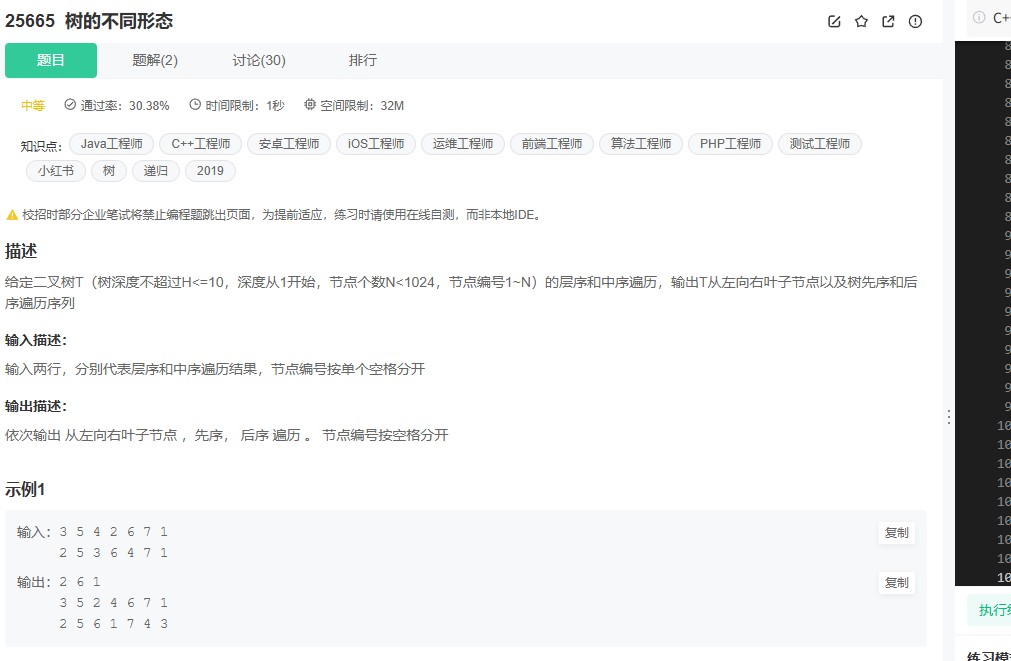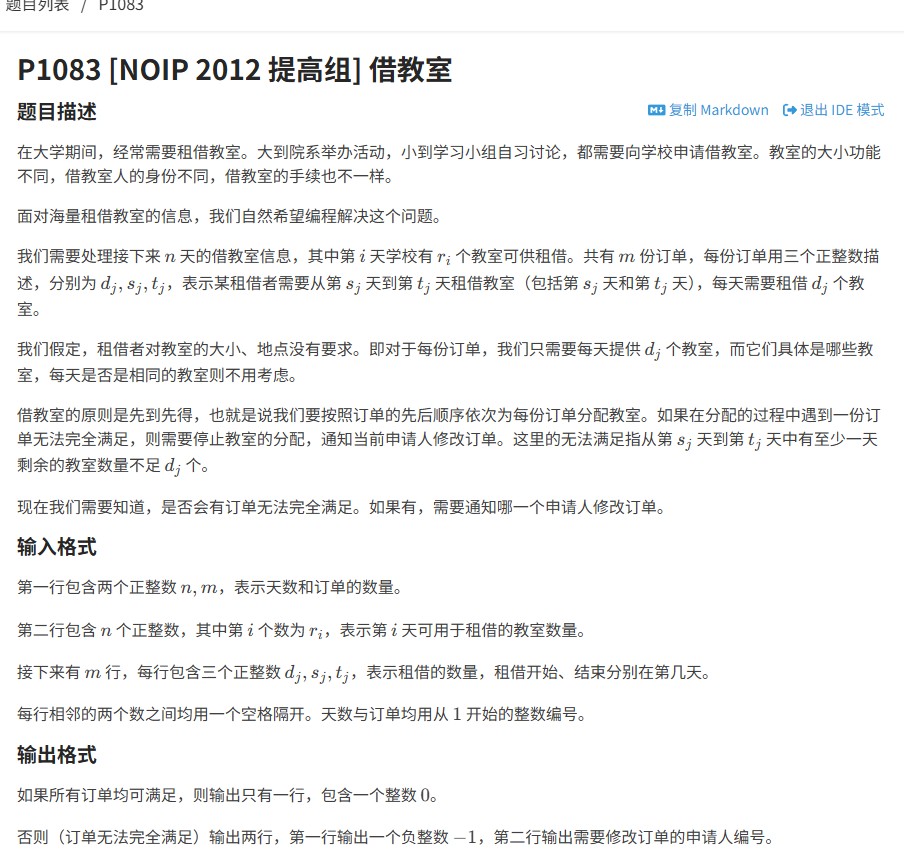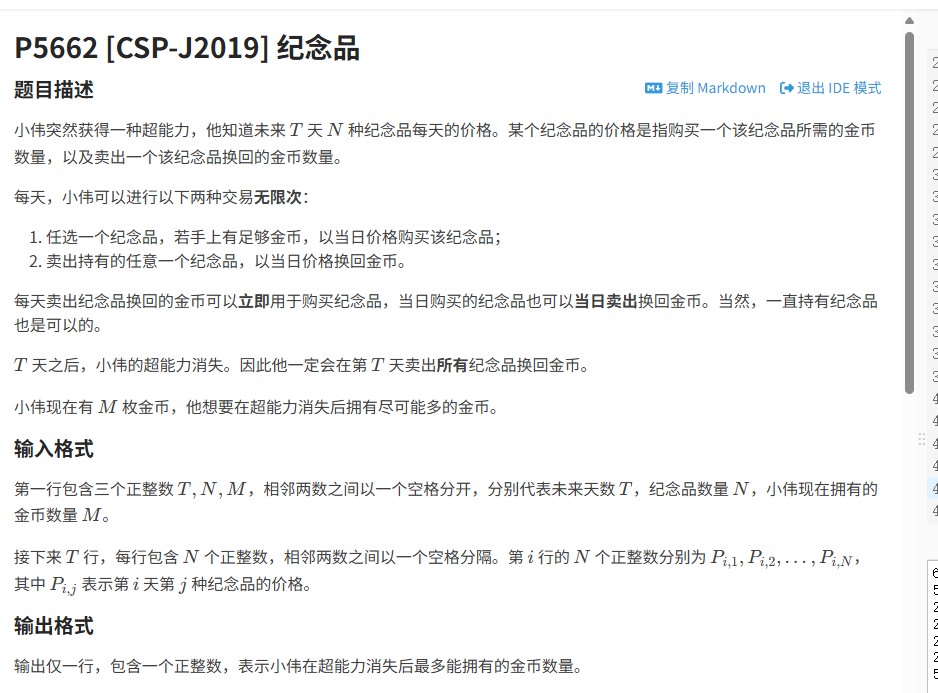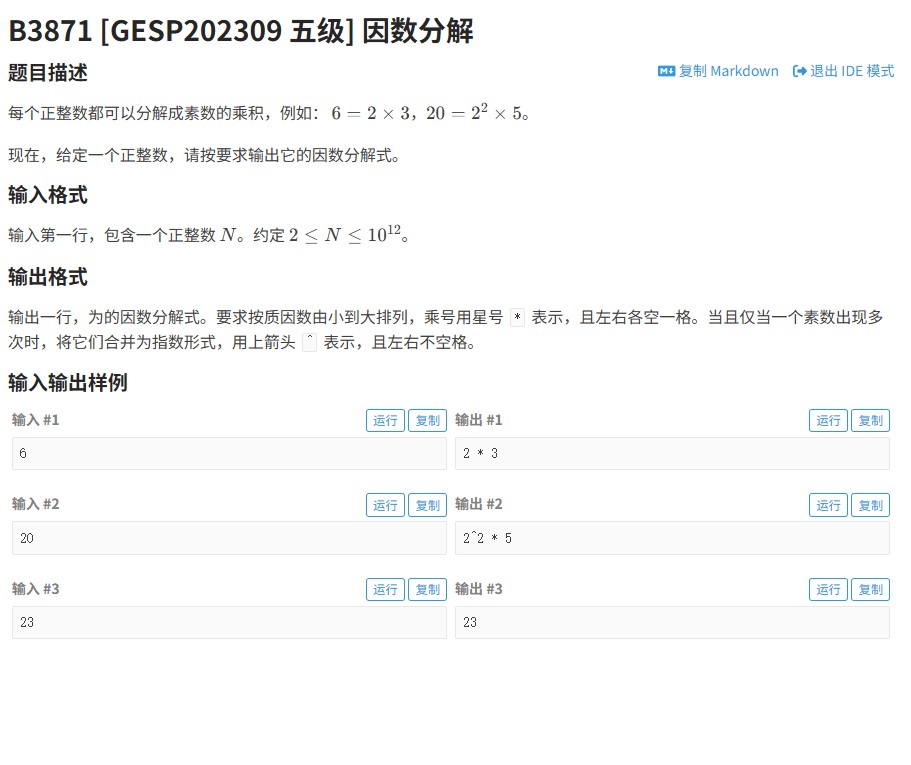2015年蓝桥杯国赛C组机器人繁殖(洛谷P8629):高精度计算实战

一、问题背景
题目模拟了机器人在n年后的繁殖情况,要求计算初始机器人数量x。每年每个机器人会繁殖出一个新机器人,同时所有机器人(包括新生)都会继续存活。这是一个典型的递推问题,由于数字可能非常大,需要使用高精度计算。
二、完整代码解析(含详细注释)
#include <iostream> #include <string> #include <vector> using namespace std; // 高精度整数类实现 class BigInt { private: vector<int> digits; // 数字按逆序存储(个位在前) bool isNegative; // 是否为负数 public: // 构造函数 BigInt() : isNegative(false) {} BigInt(string s) { if (s.empty()) return; isNegative = (s[0] == '-'); // 逆序存储数字 for (int i = s.size() - 1; i >= (isNegative ? 1 : 0); --i) { digits.push_back(s[i] - '0'); } } // 加法运算符重载 BigInt operator+(const BigInt& other) const { BigInt result; int carry = 0; int maxLen = max(digits.size(), other.digits.size()); for (int i = 0; i < maxLen || carry; ++i) { int sum = carry; if (i < digits.size()) sum += digits[i]; if (i < other.digits.size()) sum += other.digits[i]; result.digits.push_back(sum % 10); carry = sum / 10; } return result; } // 减法 BigInt operator-(const BigInt& other) const { BigInt result; int borrow = 0; for (int i = 0; i < digits.size(); ++i) { int diff = digits[i] - borrow; if (i < other.digits.size()) diff -= other.digits[i]; if (diff < 0) { diff += 10; borrow = 1; } else { borrow = 0; } result.digits.push_back(diff); } // 去除前导零 while (result.digits.size() > 1 && result.digits.back() == 0) { result.digits.pop_back(); } return result; } // 乘法 BigInt operator*(const BigInt& other) const { BigInt result; result.digits.resize(digits.size() + other.digits.size(), 0); for (int i = 0; i < digits.size(); ++i) { int carry = 0; for (int j = 0; j < other.digits.size() || carry; ++j) { long long product = result.digits[i + j] + (long long)digits[i] * (j < other.digits.size() ? other.digits[j] : 0) + carry; result.digits[i + j] = product % 10; carry = product / 10; } } // 去除前导零 while (result.digits.size() > 1 && result.digits.back() == 0) { result.digits.pop_back(); } return result; } // 除法 BigInt operator/(const BigInt& other) const { BigInt quotient, remainder; for (int i = digits.size() - 1; i >= 0; --i) { remainder = remainder * BigInt("10") + BigInt(to_string(digits[i])); int count = 0; while (remainder >= other) { remainder = remainder - other; count++; } quotient.digits.insert(quotient.digits.begin(), count); } // 去除前导零 while (quotient.digits.size() > 1 && quotient.digits.back() == 0) { quotient.digits.pop_back(); } return quotient; } // 比较运算符 bool operator>=(const BigInt& other) const { if (digits.size() != other.digits.size()) { return digits.size() > other.digits.size(); } for (int i = digits.size() - 1; i >= 0; --i) { if (digits[i] != other.digits[i]) { return digits[i] > other.digits[i]; } } return true; } // 输出 friend ostream& operator<<(ostream& os, const BigInt& num) { for (int i = num.digits.size() - 1; i >= 0; --i) { os << num.digits[i]; } return os; } }; // 计算2的n次幂 BigInt powerOfTwo(int n) { BigInt result("1"); for (int i = 0; i < n; ++i) { result = result * BigInt("2"); // 连乘实现幂运算 } return result; } int main() { int n; // 年数 string s_str; // n年后的总数 cin >> n >> s_str; BigInt s(s_str); // 转换为高精度数 // 根据递推公式计算初始数量x BigInt two_pow_n1 = powerOfTwo(n + 1); BigInt numerator = s + two_pow_n1 - BigInt(to_string(n + 2)); BigInt denominator = two_pow_n1 - BigInt("1"); BigInt x = numerator / denominator; cout << x << endl; return 0; }
三、数学推导与算法解析
递推公式:通过分析机器人繁殖规律,得出x = (S + 2^(n+1) - n - 2) / (2^(n+1) - 1)
高精度实现:使用vector逆序存储大数,实现四则运算
幂运算优化:通过连乘快速计算2的幂次
四、常见问题解答
Q:为什么要用高精度计算? A:当n较大时,2^n会超出long long范围,必须使用高精度
Q:digits为什么逆序存储? A:方便处理进位和运算,个位在前的存储方式更符合计算习惯
Q:如何优化计算效率? A:可以预计算2的幂次表,或使用更高效的大数运算算法
原创内容 转载请注明出处





